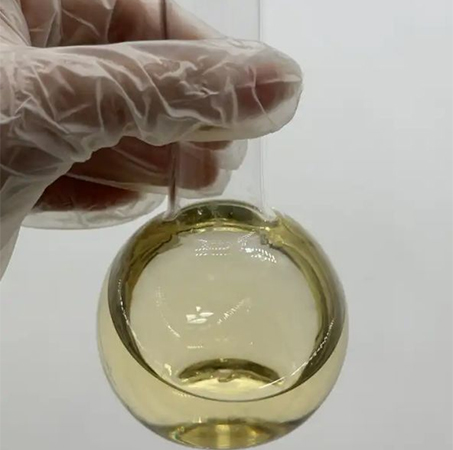1. Concrete with high fluidity is prone to stratification and segregation.
In most cases, the high flow concrete prepared with polycarboxylic acid based water reducing agent, even if the amount of water reducing agent and water consumption are well controlled, will not cause bleeding of concrete mixture, but it is easy to occur. Both the sinking of coarse aggregate and the lifting of mortar or pure pulp show stratification and segregation. When the concrete mixture is poured, even if there is no vibration, there will be obvious stratification and segregation phenomenon.
The main reason is that the slurry viscosity drops sharply when the concrete mixed with the Polycarboxylate Water Reducer has high fluidity. The compatibility of appropriate thickening components can only solve this problem to a certain extent, and the compatibility of thickening components often leads to reactions that seriously reduce the effect of water reduction.

2. When used in combination with other types of water reducing agents, there will be no superposition effect.
In the past, when preparing concrete, the type of pumping agent can be changed at will, and the performance of the concrete mixture will not be very different from the results of the laboratory, nor will there be sudden changes in the performance of the concrete mixture.
It is difficult to obtain superposition effect when polycarboxylic acid superplasticizer is used in combination with other types of superplasticizer, and the mutual solubility of polycarboxylic acid superplasticizer solution and other types of superplasticizer solution is inherently poor.
3. No modification effect after adding common modification ingredients.
At present, the scientific research of polycarboxylic acid based water reducer is less invested. In most cases, the purpose of scientific research is simply to further improve its plasticizing and water reduction effects. It is difficult to design molecular structures according to different engineering needs. A series of polycarboxylic acid based water reducing agents with different slow speed, acceleration effect, no gas or gas performance and viscosity were synthesized. Due to the diversity and instability of cement, admixtures and aggregates in engineering, it is very important for admixtures manufacturers and suppliers to mix and modify polycarboxylate water reducing agent products according to engineering needs.
At present, the technical measures of composite modified water reducing agents are basically based on the modification measures of traditional water reducing agents such as lignosulfonate series and naphthalene series high efficiency water reducing agents. The experimental results show that the previous modification measures are not necessarily suitable for polycarboxylic acid based water reducer. For example, sodium citrate is not suitable for polycarboxylate based water reducer among the flame retardant components used for naphthalene based water reducer modification. Not only does it not slow coagulation, but it may accelerate coagulation, and the miscibility of sodium citrate solution and polycarboxylic acid based water reducer is also poor.
In addition, many types of defoaming agents, air entraining agents and thickeners are not suitable for use as polycarboxylate based water reducing agents. Through the above test analysis, it is not difficult to see that due to the particularity of the molecular structure of polycarboxylate-based water reducing agent, based on the depth of scientific research at this stage and the accumulation of engineering application experience, there are not many ways to modify polycarboxylate-based water reducing agent through the influence of other chemical components on polycarboxylate-based water reducing agent. Since the modification theory and standard of other types of water reducing agents have been established in the past, polycarboxylate-based water reducing agents may need to be explored and studied more deeply. Make corrections and additions.
4. The performance stability of the product is too poor.
There are not many concrete superplasticizer synthesis companies that can really be considered as fine chemical companies. Many enterprises only stay in the primary production stage of the mixer and packaging machine, and the quality of the product is limited by the quality of the masterbatch. In terms of production control, the instability of raw material source and quality has been the main factor affecting the performance of polycarboxylate-based superplasticizers.

 English
English 





